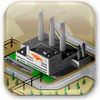Classic computer-based grid video game designed to simulate city life for players
Classic computer-based grid video game designed to simulate city life for players
Vote: (144 votes)
Program license: Free
Works under: Windows
Vote:
Program license
(144 votes)
Free
Works under:
Windows
Pros
- Adjustable isometric view offers a fresh perspective on city simulation.
- Complex and engaging city-building mechanics.
- Economic and infrastructure management provides depth to gameplay.
- Classic game design and nostalgic charm.
Cons
- Outdated graphics and user interface by contemporary standards.
- Lacks some features available in modern city-building games, like subways.
- Topography is simplified, with no option to manipulate terrain elevations.
Classic City-Building Experience Reimagined
Sim City 2000 is a vintage gem in the genre of city-building simulation games. Developed by the acclaimed game designers Will Wright and Fred Haslam, this sequel to the original SimCity boasts numerous enhancements that set a new standard for urban simulation experiences when it was released in 1993. Today, it continues to be recognized for its influence on modern titles within the genre.
Isometric Elegance and Ingenious Gameplay
One of the most significant improvements in Sim City 2000 over its predecessor is the transition from a top-down perspective to a compelling isometric view, which provides a pseudo-3D experience to the game. This perspective shift not only visually enriches the player's engagement but also accentuates the depth and complexity of the urban environments players can create.
The primary objective in Sim City 2000 is deceptively simple: to build and maintain a flourishing urban center. However, achieving this involves a intricate dance of managing residential, commercial, and industrial zones, infrastructure, and essential services—all while balancing the budget through an effecient taxation system. Player's are tasked with the role of a omnipotent mayor, challenged to weave together a city that not only survives but prospers over time.
Features and Functionalities That Stand the Test of Time
Despite its age, the gameplay in Sim City 2000 remains engaging due to its deep and nuanced mechanics. Players must consider the placement of zones and services to optimize their city’s growth and citizen satisfaction. The provision of electricity, water, and other amenities is essential for the development of any robust metropolis within the game.
As the city expands, players must also confront challenges like crime, for which the game facilitates the strategic placement of police stations to maintain order. While certain elements like subways and underground sewer systems are absent, and the topography is simplified, these are minor limitations in an otherwise complex and satisfying urban planning experience.
Enduring Charm Amidst Limitations
Despite being a product of the early '90s—when graphics and user interfaces were considerably less sophisticated by today's standards—the aesthetic and gameplay of Sim City 2000 carry a certain enduring charm that continues to captivate players. While the game's visuals and interface might seem dated to newcomers, they encapsulate the essence of the era and contribute to the game's nostalgic appeal.
Conclusion
In conclusion, Sim City 2000 remains a hallmark of city-building simulations, a time-tested game that continues to offer a deep and rich planning experience. Its early graphics are offset by its enthralling gameplay and variety of construction options, which collectively ensure that it remains a solid choice for simulation enthusiasts.
Pros
- Adjustable isometric view offers a fresh perspective on city simulation.
- Complex and engaging city-building mechanics.
- Economic and infrastructure management provides depth to gameplay.
- Classic game design and nostalgic charm.
Cons
- Outdated graphics and user interface by contemporary standards.
- Lacks some features available in modern city-building games, like subways.
- Topography is simplified, with no option to manipulate terrain elevations.




